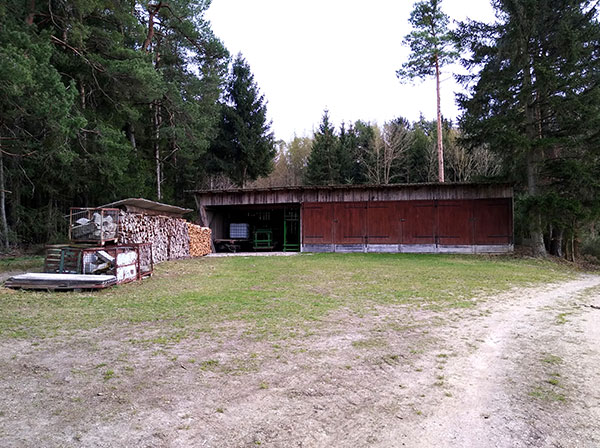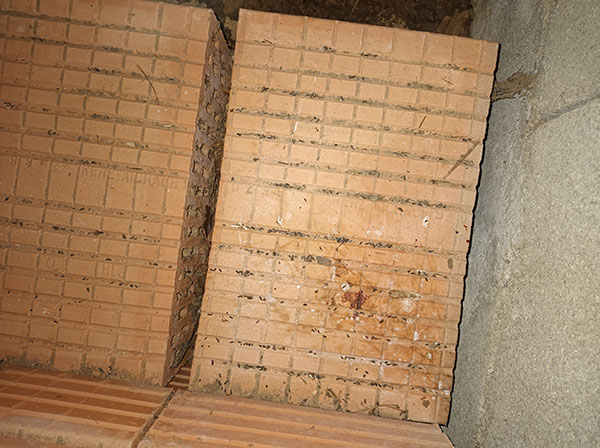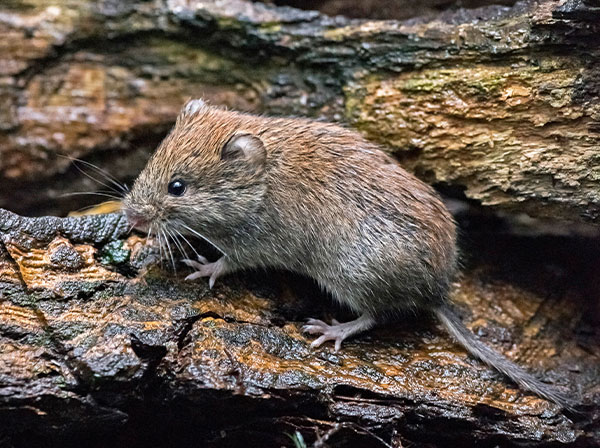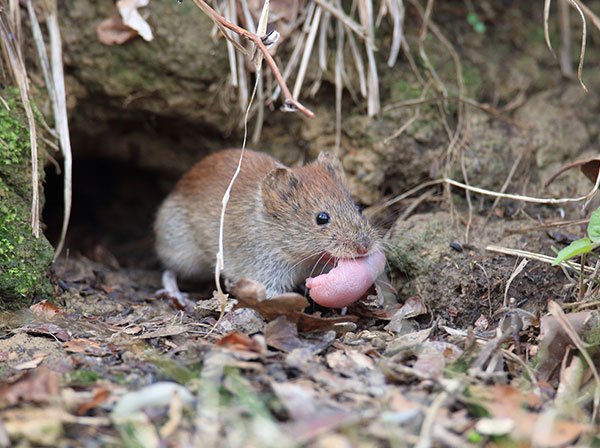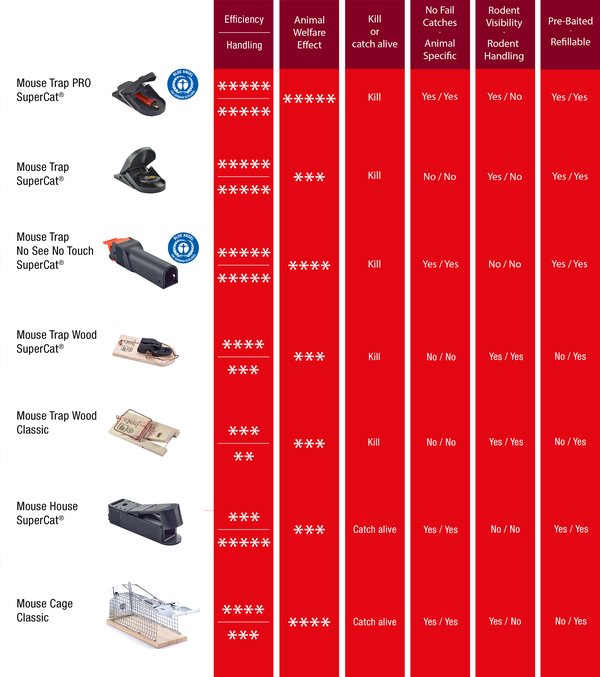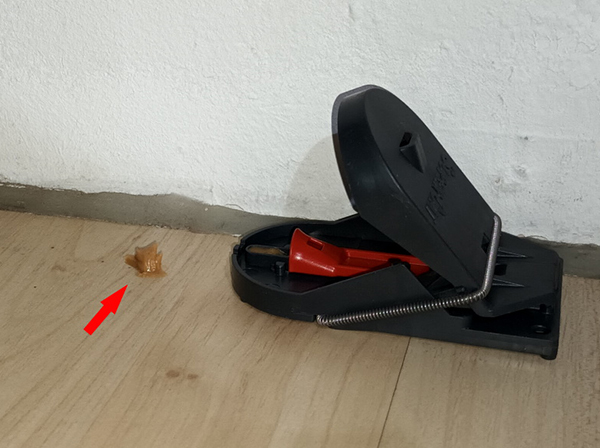In huts, sheds and barns, the presence of bank voles can be detected by sounds, droppings, marks caused by gnawing and urine odours.
Just like other rodents, bank voles destroy foodstuff, by consumption, as they eat and by contamination with saliva, urine, droppings and hair. They cause more damage by gnawing materials like paper, cardboard, insulation, packaging, textiles, cables, pipes and wood, for reasons such as opening food containers, gathering nest-building material, making access holes wider, or simply to grind down their incisor teeth.
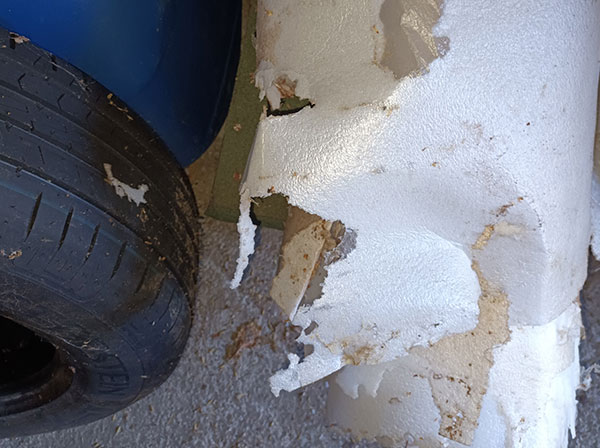
A roll of Styrofoam, stored in a barn, damaged by bank voles
In their natural environment the presence of bank voles is evidenced by holes in the ground, by their runways in the ground-covering layers of vegetation and by debarked tree branches.
Often, when a human observer remains quiet and still near a burrow, bank voles will emerge, but they will stay exposed only very briefly and will rush back into hiding at great speed.
Bank voles damage saplings and young trees by feeding on the bark of elder, beech, larch and Douglas fir trees. In years of high population density, they may cause serious reductions in reforestation and inhibit the natural regeneration of woodland. They are, therefore, regarded as plant pests.
Bank voles can be harmful to health. They harbour pathogens and parasites and bring them into human residences. Bank voles carry fleas, ticks, mites and tapeworms. Transmission of pathogens occurs by contact with the rodents’ faeces, urine, saliva, blood and hair.

Fleas leaving a bank vole that has been killed with a mouse trap.
Bank voles are the main carrier of the Puumala-Hanta virus, which causes severe haemorrhagic fever and kidney failure. The virus is transmitted by contact with an infected bank vole’s body fluids, fur or faeces. The excretions are contagious up to 12 days. Infection is also possible by inhalation of contaminated dust. This may happen when cleaning up an infested area or handling piled up firewood. The number of Hanta infections in humans correlates with the number of bank voles and every 3-4 years, when a year of high-density population occurs, there is a peak the infection rate.
Bank voles are intermediate hosts for the fox tapeworm. Humans can be infected with this worm by direct contact with bank voles, or, indirectly, via cats or dogs that have eaten bank voles. Infections with fox tapeworm are rare but disastrous. This worm ends up in the lungs, brain or liver of humans and can be fatal. There exists a treatment using powerful drugs to stop the progressive destruction of organs, but there is no cure. The drugs must be taken for life.
When catching bank voles or working in infested areas, gloves and a FFP3 mask should be worn.


![[Translate to Dansk:] [Translate to Dansk:]](/files/pics/7/2/csm_Mouse__860x586px_4295e63b71.jpg)

![[Translate to Dansk:] Ratten [Translate to Dansk:] Ratten](/files/pics/0/9/csm_Rat__860x586px_e3e988d139.jpg)
![[Translate to Dansk:] Maulwurf [Translate to Dansk:] Maulwurf](/files/pics/2/e/csm_Mole__860x586px_d43e7e8948.jpg)
![[Translate to Dansk:] indian-meal moth on oatmeal [Translate to Dansk:] indian-meal moth on oatmeal](/files/pics/b/6/csm_indian-meal-moth-on-oatmeal_low_659108f917.jpg)
![[Translate to Dansk:] Schnecken [Translate to Dansk:] Schnecken](/files/pics/5/f/csm_Slug__860x586px_da4b2d7f83.jpg)
![[Translate to Dansk:] Vogel [Translate to Dansk:] Vogel](/files/pics/8/9/csm_Bird__860x586px_273b7ffaf9.jpg)
![[Translate to Dansk:] Marder [Translate to Dansk:] Marder](/files/pics/d/6/csm_Marten__860x586px_7508da5714.jpg)
![[Translate to Dansk:] Fliege [Translate to Dansk:] Fliege](/files/pics/a/d/csm_Fly__860x586px_66c70bb32f.jpg)


